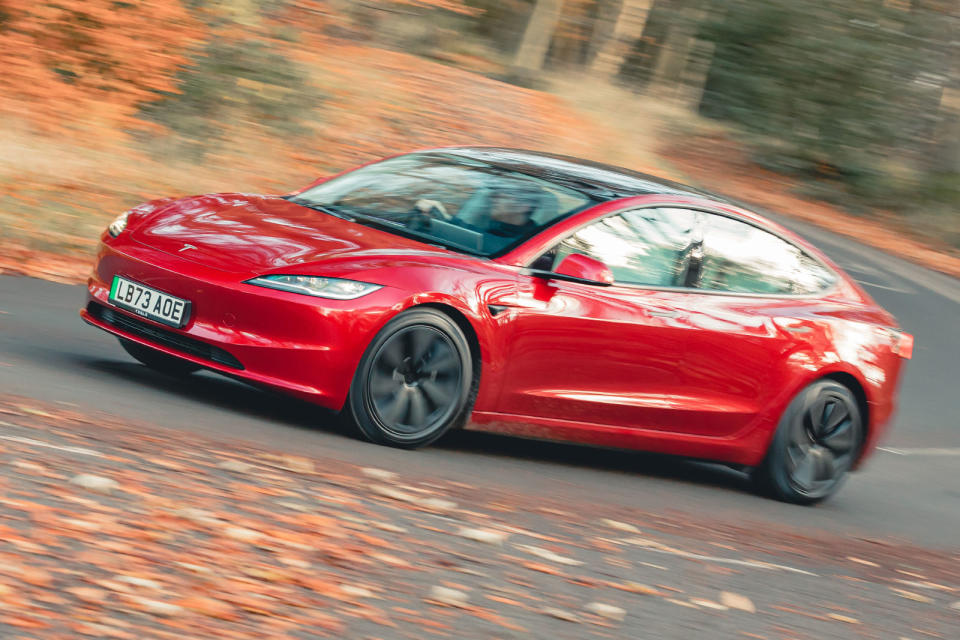Tesla Model 3

Say what you like about Elon Musk and his wireless brain chips, but when future historians chart the development of personal transport, the Tesla Model 3 will rank alongside Ford’s Model T and the VW Beetle in its significance.
Admittedly, when this entry-level Tesla arrived in 2017, electric cars already weren’t too unusual a sight, with BMW, Nissan and Tesla itself all having footholds in the market.
However, many years later, they are simply everywhere you look. Musk and Tesla can take credit for this not only directly – after all, so many of the EVs we see day to day are Model 3s – but also indirectly because this car was a brutal wake-up call for legacy manufacturers. The bug-eyed, California-made EV with a cabin of near-monastic restraint has been a catalyst for change.
And the Model 3 now comes in for a facelift. This update seems long overdue when measured by typical industry standards, but then Tesla isn’t a typical car company, and the product has proved novel enough to justify a delay between launch and update usually only witnessed with supercars.
Still, it is now necessary. In recent years, the Model 3 has been joined by the Polestar 2, Hyundai Ioniq 6, BMW i4 and BYD Seal, and these are merely what you might consider the most direct rivals in terms of size and capability.
It means that although Tesla now prices the Model 3 more keenly than ever, its excellent driving range, charmingly uncluttered interior and access to the brand’s Supercharger network no longer guarantee success. Comfort and perceived quality now matter more.
So let’s find out what exactly has changed for this unmistakable EV, and how well those changes future-proof a car that – who knows? – may well soldier on for seven more years.
The range at a glance
Models | Power | From |
|---|---|---|
241bhp | £39,990 | |
491bhp (est) | £49,900 | |
tbc | tbc |
Not only does Tesla change its pricing on a whim, but it also often refuses to divulge the exact power output of its cars, which can make it tricky to know where each model stands in relation to both range-mates and rivals.
For now, the entry-level Model 3 sneaks below £40,000 and represents fine value for money. The faster, longer-legged Dual Motor All Wheel Drive (aka Long Range) tested here is the current range-topper, but in time a Performance derivative will appear – most likely with an outrageous 0-60mph time.
Spec is generally fixed, the only options being paint, wheels, interior colourway and ‘autonomous’ capability.
]]>

 Yahoo Autos
Yahoo Autos 